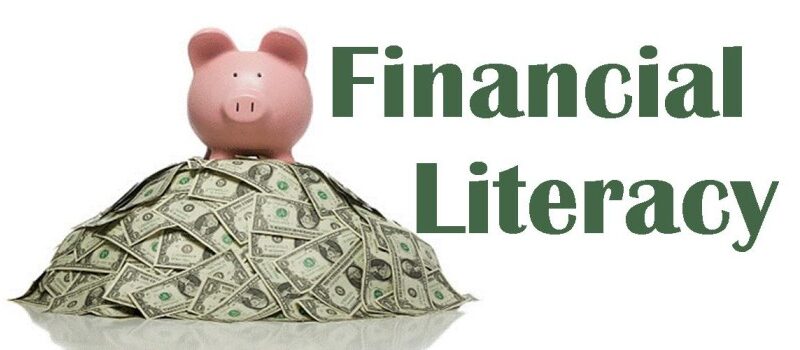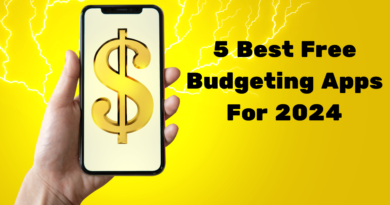5 Financial Literacy Books That Will Change Your Life
3. Your Money or Your Life” by Vicki Robin and Joe Dominguez:
“Your Money or Your Life” written by Vicki Robin and Joe Dominguez is a transformational guide that redefines the relationship between individuals and their finances. Originally published in 1992 and updated in subsequent editions, this book offers a holistic approach to personal finance, intended to help readers align their spending habits with their values and achieve financial freedom.

Key Themes and Insights:
Money as life energy:
A central concept in the book is the idea of viewing money as a representation of the time and energy spent to earn it. This perspective prompts readers to consider the true cost of their expenses in terms of hours worked.
Keeping track of your finances:
“Your Money or Your Life” offers a detailed system for tracking and classifying expenses. By understanding where money is spent, readers can make informed decisions about their priorities and identify areas of potential savings.
Creating a Financial Roadmap:
The authors provide step-by-step programs to help readers gain control of their finances. This includes creating a clear picture of income and expenses, establishing a budget, and setting realistic financial goals.
Supply Curve:
The book introduces the fulfillment curve, which is a graphical representation of the relationship between spending and happiness. Readers are encouraged to evaluate their purchases based on their fulfillment, leading to more intentional and satisfying spending.
Achieving Financial Freedom:
Vicki Robin and Joe Dominguez outline a path to financial independence by emphasizing the importance of saving, investing, and reducing reliance on traditional employment. This book advocates creating sources of passive income to support a more fulfilling and free lifestyle.
Sustainable living:
“Your Money or Your Life” encourages a shift towards sustainable living and conscious consumerism. The authors emphasize the impact of individual choices on the environment and overall well-being.
Development of Consciousness:
Throughout the book, emphasis has been laid on creating consciousness towards money and consumption. It involves making deliberate choices, questioning social norms, and finding satisfaction beyond material possessions.
In short, “Your Money or Your Life” is a thought-provoking guide that challenges traditional notions of money and offers practical tools for achieving financial goals. By integrating the philosophy of conscious spending with actionable steps toward financial freedom, the book empowers readers to take control of their financial destiny and live a more purposeful life.
4. “The Total Money Makeover” by Dave Ramsey:
“The Total Money Makeover” written by Dave Ramsey is a comprehensive and practical guide to financial fitness, offering a step-by-step plan to transform your financial life. Written by renowned financial expert Dave Ramsey, this book provides actionable advice, strategies, and principles to help individuals take control of their money, eliminate debt, and build wealth.

Key Themes and Insights:
Seven baby stages:
The cornerstone of “The Total Money Makeover” is Ramsey’s Seven Baby Steps, a sequential plan designed to move individuals from financial chaos to stability and ultimately wealth-building. These steps include building an emergency fund, paying off debt, and investing for the future.
Debt Snowball Method:
Ramsey introduced the debt snowball method as a powerful strategy for eliminating debt. This approach involves paying off smaller debts first, gaining momentum, and then tackling larger debts. This method emphasizes psychological wins and motivation during the loan repayment process.
emergency fund:
The book emphasizes the importance of emergency funds as a financial safety net. Ramsey recommends saving three to six months’ worth of living expenses to protect against unexpected financial setbacks.
Live on a Budget:
Ramsey advocates the use of a monthly budget as an important tool for managing money effectively. Creating and sticking to a budget enables individuals to intentionally allocate money, prioritize expenses, and avoid unnecessary debt.
Cash Envelope System:
The Cash Envelope System is a solid method promoted by Ramsey for controlling spending. It involves allocating cash into designated envelopes for specific expense categories, helping individuals stay disciplined and avoid overspending.
Debt-free life:
“The Total Money Makeover” promotes a debt-free lifestyle, encouraging readers to eliminate all non-mortgage debt. Ramsey argues that by becoming debt-free, individuals can achieve financial peace and open the door to wealth building.
Investing for the future:
This book provides guidance on long-term wealth-building through disciplined investing. Ramsey advocates a diversified approach to investing with an emphasis on mutual funds and retirement accounts.
Financial Peace University:
Ramsey’s Financial Peace University is offered as a comprehensive program that complements the book. It includes tools, resources, and classes aimed at providing ongoing support and education on personal finance.
Ultimately, “The Total Money Makeover” is a practical and inspiring guide that will resonate with readers who want to take charge of their financial destiny. Dave Ramsey’s straightforward approach and emphasis on behavior change make this book a valuable resource for anyone looking to achieve financial freedom and build a solid financial foundation.




